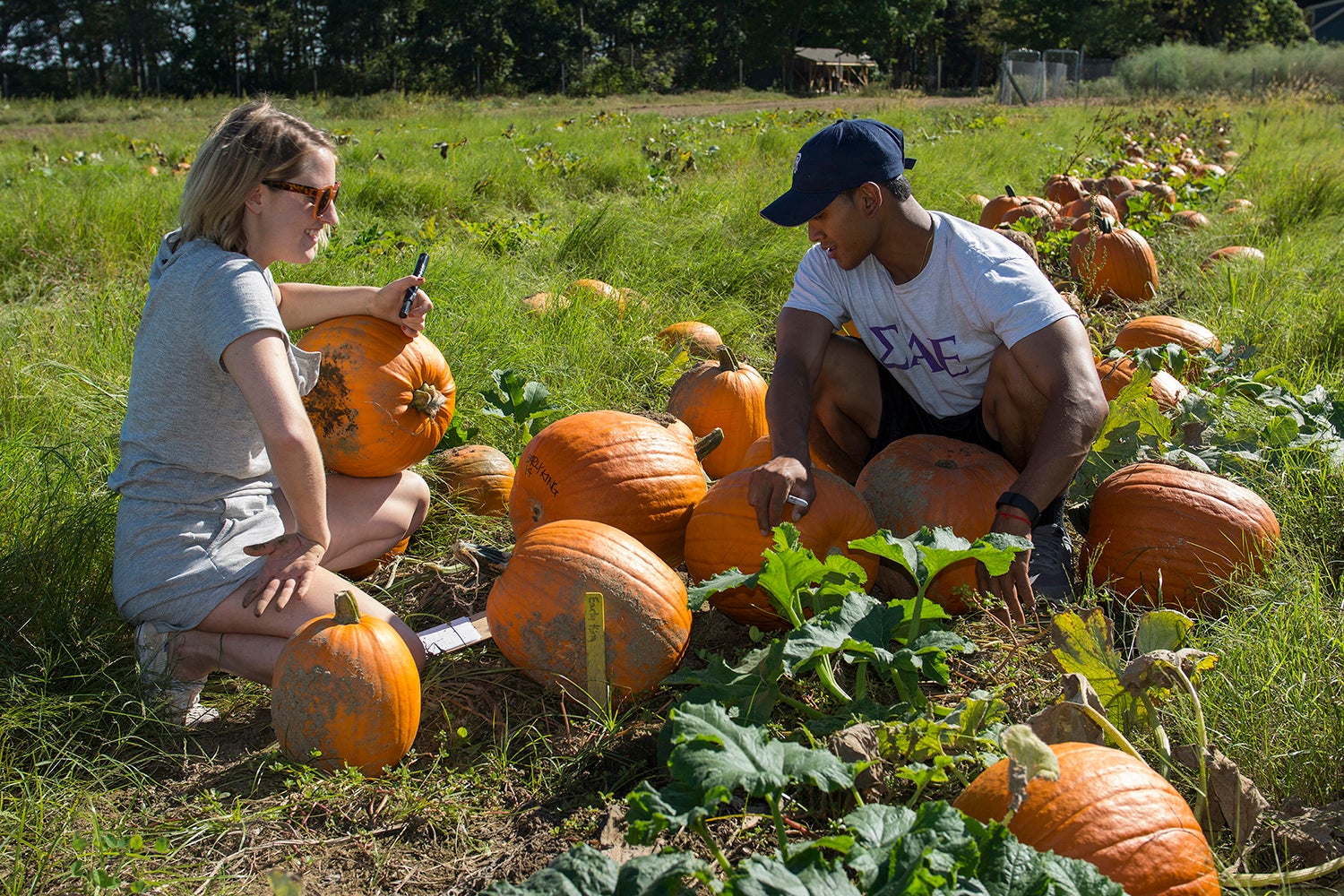KINGSTON, R.I. – October 27, 2016 – Rhode Island’s more than 100 commercial pumpkin farmers have been battling a fungus called powdery mildew that covers the leaves of pumpkin plants with a white film and reduces the size and weight of the pumpkins each plant produces. Some also become infected with black rot, a disease that looks as bad as it sounds.
With seed companies now offering new pumpkin varieties that are supposedly disease resistant, a University of Rhode Island researcher has undertaken a scientific “pumpkin trial” to identify the best varieties for farmers to grow in the future.
“Pumpkins are a very big industry in Rhode Island,” said Rebecca Brown, URI professor of plant sciences and an expert in growing vegetables. “Almost 10 percent of the farmers in the state grow pumpkins, and pumpkins are a big driver of agri-tourism in the fall. Pumpkin picking, hayrides and corn mazes are an important source of income for our farmers.”
Brown and her students planted 17 varieties of pumpkins in a 3-acre section of URI’s Agronomy Farm in June. They collected data on disease responses throughout the growing season, counted how many pumpkins were marketable from each plant, and weighed and measured each pumpkin when they were harvested in late September.
It was a challenging year to conduct such a study.
“It wasn’t a good year for pumpkins in the region due to the drought,” Brown said. “Our pumpkins may have been more affected than the commercial growers because our capacity to irrigate at URI is not as good as at commercial farms.”
As a result, seed varieties that were supposed to grow pumpkins to about 25 pounds instead produced 15-pound pumpkins.
“When we harvested them, the size was what we expected, but their weight was light,” she said. “The biggest pumpkin in the field was about 40 pounds, but the average was a lot lower. And since farmers generally sell pumpkins by the pound, that’s not good.”
Nonetheless, some varieties proved to be better than others. Brown’s favorite, a variety called Camaro, averaged 62 marketable pumpkins per plot – each plot contained 33 to 45 plants – and the plants were somewhat compact, enabling farmers to grow twice as many plants in their fields than other varieties.
About 300 of the pumpkins grown in the trial were given to 105 URI Master Gardeners to place on their doorsteps for the second stage of the project. In an effort to determine the “doorstep life” of a Halloween pumpkin, the gardeners have been instructed to leave the pumpkins outdoors and report to Brown when they begin to rot.
The results of this component of the study won’t be completed for about another month, when the URI researcher will provide local pumpkin farmers with a final report on the project.
“If they’re not carved, they should last until about Thanksgiving,” Brown said. “If they’re carved, they start rotting sooner. But we’ll just have to wait and see.”

